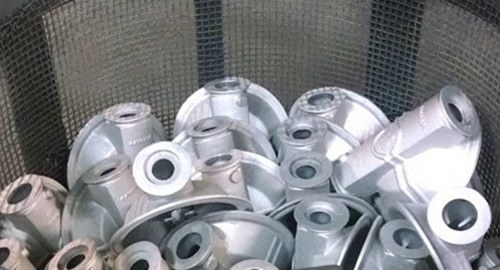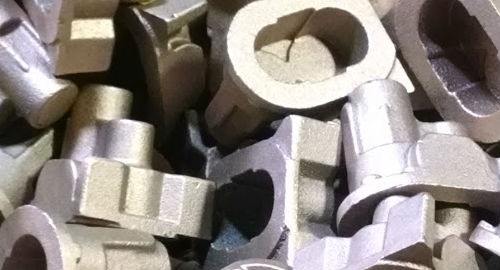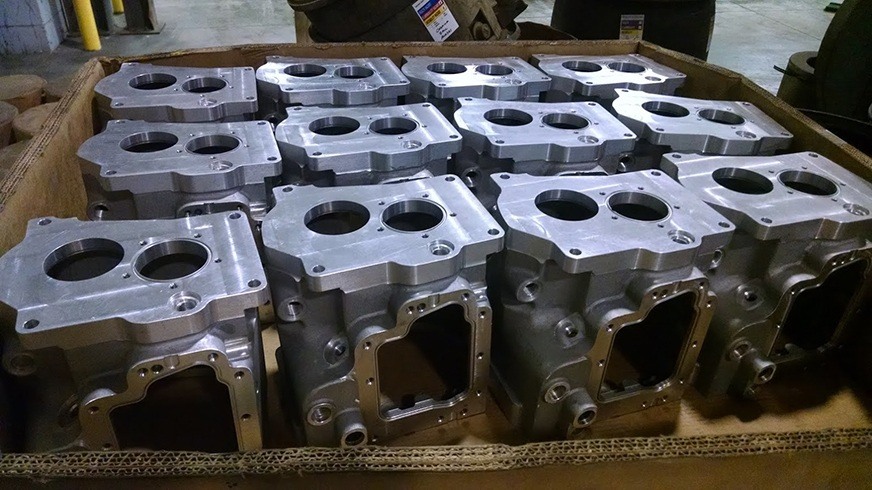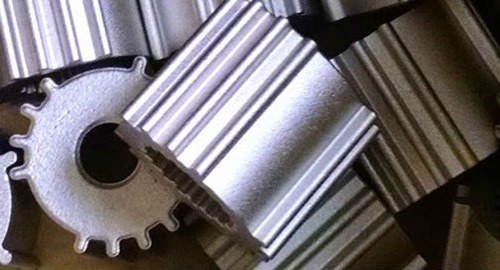For many years, porosity has been a major problem in the metal casting process. Porosity in casting can occur as a result of gas bubbles that form as the molten metal solidifies — it can lead to leakage when under pressure, rendering the finished casting virtually unusable.
Vacuum impregnation, also known as porous metal sealing or porosity sealing, is a process used to seal porosity in metal castings via the application of vacuum pressure. Vacuum impregnation can be effective in eliminating micro porosity and macro porosity. Micro porosity is confined within the walls of the casting, while macro porosity takes the form of larger cracks or fissures that are visible on the outer walls.

Fundamentals of Vacuum Impregnation
Vacuum impregnation involves the removal of air from the casting that is present during solidification. The void is then filled with a durable material to create a leak-proof seal. When executed properly, vacuum impregnation will seal porosity without changing the structure or appearance of the casting in any discernible way.
Steps in the Vacuum Impregnation Process

The steps in the typical vacuum impregnation process include:

- Placing the casting inside a specially-designed impregnation chamber and using a pressurized vacuum to remove the air. The leak path is also filled with a sealant during this stage.
- Moving the casting to a recovery station where any excess sealant is recovered for reuse in future vacuum impregnation processes.
- Rinsing any residual sealant from the casting by placing it in a wash station.
- Moving the casting to a cure station where the impregnated sealant is polymerized in the path of the leak.
Request a free quote
For Vacuum Impregnation Services
Types of Vacuum Impregnation Sealants

There are three types of sealants that can be used during vacuum impregnation:
- Anaerobic - An anaerobic sealant is normally used with powdered metals and over-molded cables and components. Anaerobic sealants make use of metal ions to produce a catalytic reaction. The sealant is recovered in the centrifuge during the impregnation process. These sealants require 48 hours of curing prior to pressure testing.
- Thermosetting recoverable - A thermosetting recoverable sealant is used with castings, cables, powdered metals and graphite parts. With this type of sealant, heat serves as the impetus for breaking down the porosity initiator. The sealant is recovered inside the impregnation chamber after use, and any unused sealant remains unaffected.
- Thermosetting recyclable - As with a thermosetting recoverable sealant, heat is used to break down the porosity initiator. However, the sealant is simply recycled and no additional recovery step is involved. This type of sealant is best used with castings and powdered metals.
Industries That Can Benefit From Vacuum Impregnation
The vacuum impregnation process can be beneficial for parts used in automobile and heavy truck manufacturing, as well as the aviation and defense industries. It can also be used with a wide range of common industrial parts such as pumps, graphite plates and control valves. Key benefits include excellent sealing, high chemical and temperature resistance, and no unpleasant odor. Vacuum impregnation represents only a small portion of the overall casting cost, making it an extremely cost-effective process.
Methods of Vacuum Impregnaton for Metal Sealing

There are several commonly applied methods of vacuum impregnation for metal sealing including:
- Dry vacuum and pressure-This method involves placing the parts inside a pressure vessel and applying and holding the vacuum until all air is removed from within the porosity. The sealant is then transferred into the pressure vessel. Upon releasing the pressure vacuum, atmospheric pressure is applied and held for a long enough period of time to enable penetration into the porosity.
- Wet vacuum impregnation-With this method of vacuum impregnation for metal sealing, parts are immersed in the sealant, which is followed by the application of the vacuum for a time period long enough to enable de-aeration. The parts are then left to soak in the sealant until penetration of the porosity is complete.
- Internal impregnation-With this process, the part actually serves as the vessel. The part is filled with sealant while all trapped air is thoroughly vented. The sealant is then pressurized until it begins to "weep" from the part. The final steps involve reducing the pressure and draining any remaining sealant.
- Wet vacuum and pressure impregnation-This method of vacuum impregnation for metal sealing involves the use of one vessel, but no storage tank. Parts are immersed in the sealant, which is followed by the application of the vacuum. The pressure is maintained until the penetration of the porosity is complete. This method typically requires a higher investment in equipment than the standard wet vacuum process.
Benefits of Using Vacuum Impregnation for Metal Sealing

The many benefits offered by vacuum impregnation for metal sealing include:
- Permanent sealing of parts that prevents cracking and degradation
- Elimination of leaks and the associated lost manufacturing time and money resulting from leaking products
- Extending tool life in metal parts
- Significant reduction in scrap and waste
- No need for in-process testing
If you could benefit from vacuum impregnation services, contact Sharretts Plating or request a free quote!
LEARN WHAT OUR MANY SATISFIED CUSTOMERS HAVE TO SAY ABOUT Us
"I would like to thank you for the help you have provided us in developing an electroless nickel plating technique on an unusual substrate. The sample platings you provided show that we should be able to reach our goals. I especially appreciate your willingness to take on an unusual job, with the uncertainties that that entails...We are looking forward to working with you in the future on our plating needs."
– Robert K.



